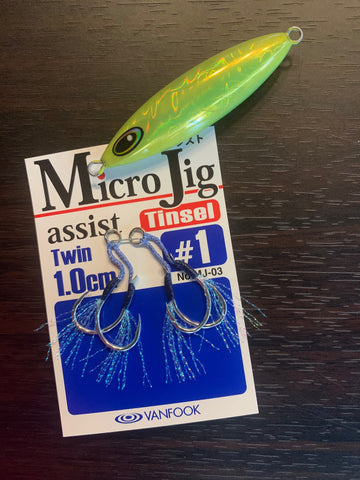The most popular Vertical Jigging Techniques in America are the Micro Jigging, Light Jigging and Slow Pitch Jigging.
You must use the correct Assist Hook for each technique, minimizing the extra weight of the hooks and maximizing the work of the jigs.
Below are the basic guidelines for the correct use of Assist Hooks in each modality of Vertical Jigging:
1 - Micro Jigging:
Micro jigging, thus considered fishings using light jigs, weighing between 3.5g and 25g, require the use of smaller and lighter hooks. Flashers are often added with the intention of attracting fish more easily.
Although small and light, the hooks must be resistant, because although the jig is small, strong and medium sized fish are often attracted.
2 - Light Jigging:
Light Jigging uses jigs with weights below approximately 100g. In this modality, the jig is not only worked on the bottom, but on the entire water column, being one of the most versatile vertical jigging techniques. Contrary to what many believe, fishing with light jigging is also possible to catch fish in relatively large sizes, such as amber jacks over 20 pounds, requiring at this time a lot of technique, and well-reinforced hooks.
3- Slow Pitch Jigging:
For the most popular vertical jigging modality in America, you must pay attention to the lightness and correct length of the hook.
The good hook brands offer different sizes of assist hooks that will help you when choosing the best for your Jig.
The use of four hooks more effectively distributes the weight of the fish when pulling it to the surface. So I advise the use of a twin assist in the front and another twin assist in the back.
Tip: The Assist Hook should be approximately 1/3 the size of your jig.
As a last option and a little more refined you can assemble your own assist hooks, deciding between the different options of materials and brands available on the market, each with its own characteristics. Assist hooks strings with or without fluorcarbon, wires, shrink tubes, different hook curves ... but this is the subject for a next article.






